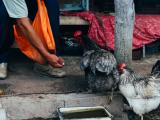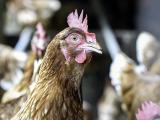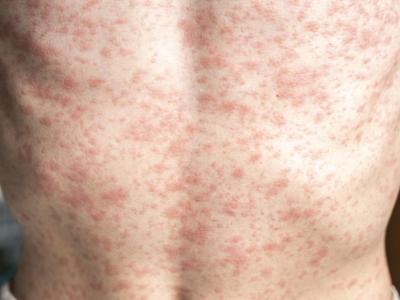Egypt today reported its first highly pathogenic H5N8 avian influenza detection, making it the third country in the Middle East to report the new H5 clade, which has also spread to several European countries after it was first identified in Russian migratory birds in June.
Meanwhile, in new developments with H5N6—the highly pathogenic strain that has turned up in two more Asian countries for the first time—Japan reported a third suspected outbreak and South Korean health officials weighed in on the threat to humans.
Egypt finds H5N8 in waterfowl
In a report to the World Organization for Animal Health (OIE), Egypt's agriculture ministry said two common coots found dead in Damietta governorate on Nov 24 tested positive for H5N8. So far the source of the virus hasn't been determined, and authorities have ordered enhanced surveillance in and around the zone where the birds were found.
Earlier this month, Israel reported an H5N8 outbreak at a large poultry farm, and about a week later Iran reported two H5N8 outbreaks in commercial layer farms.
H5N8 suspected in Ukrainian outbreak
The Ukraine government today reported a highly pathogenic H5 outbreak in backyard birds in a village in Kherson province, located in the southern part of the country on the Black Sea coast, according to another OIE report.
Clinical signs in the flock were noted on Nov 14, and the farmer notified veterinary authorities about an increase in village bird deaths 2 weeks later. Of 2,500 susceptible birds, the virus killed 410. Culling operations are under way.
Test results today on samples from dead birds revealed highly pathogenic H5, but so far tests have not revealed the N type, so for now, it's not clear if the Ukrainian outbreak is part of the wider European outbreaks, which so far have affected 13 countries in the region.
Elsewhere, German veterinary officials today said in a third OIE report that H5N8 struck another location in Mecklenburg-West Pomerania state in the northern part of the country. The outbreak began on Nov 28, at a farm housing hens, geese, and ducks. The virus killed 124 of 329 susceptible birds, and the remaining ones were culled to stem the spread of the disease.
H5N6 developments in Japan, South Korea
Japan's government, meanwhile, reported a third suspected H5N6 outbreak, which would be the second from Niigata prefecture, located in the northwestern part of the country, according to a government statement translated and posted by Avian Flu Diary (AFD), an infectious disease news blog. The new outbreak involves a farm housing 230,000 birds.
A few days ago animal health officials in Japan announced two outbreaks, one in Niigata and the other in Aomori prefecture, north of there. Yesterday they announced that samples were positive for a highly pathogenic H5 strain, but so far the N type hasn't been identified. Earlier this month H5N6 was confirmed in black swans and in environmental samples in Japan.
In South Korea, which has confirmed H5N6 in farms in at least three provinces, agriculture and health officials have weighed in on investigations and the potential threat to humans, according to notes posted from an agriculture avian flu committee meeting and a statement from the country's Center for Disease Control (CDC), translated and posted by AFD.
The avian flu committee, which met yesterday, said the virus was likely carried from China by migratory birds. South Korean scientists recently said the H5N6 virus appears to be a reassortant containing different internal genes than earlier strains isolated in China. The committee experts noted that the outbreaks in South Korea have been marked by rapid development of clinical symptoms in both ducks and chickens.
Meanwhile, South Korea's CDC said today that an early genetic analysis hasn't found any red flags about an increased risk to mammals, adding that the risk to humans is very low. Officials noted that animal experiments are under way to gauge the pathogenicity and potential risk to humans and that South Korea's CDC has established a human infection response team.
H5N6, a reassortant between H5N1 and H6N6, has been reported in birds in a handful of Asian countries since 2014, but so far human cases have been reported only in China, where the virus has so far sickened 16 people, 10 of them fatally.
See also:
Nov 30 OIE report on Egyptian outbreak
Nov 30 OIE report on Ukrainian outbreak
Nov 30 OIE report on German outbreak
Nov 30 AFD post on additional Japanese outbreak
Nov 30 AFD post on South Korean AI committee meeting
Nov 30 AFD post on South Korean CDC statement



















